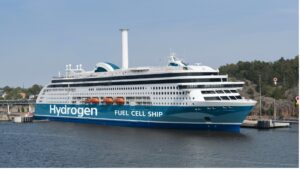Emission Control: Time is running out – CSIRO urges Aussies to prioritise the decarbonisation of its transport sector

Pic: Getty Images
Decarbonisation is the watchword of our times. In recognition of the increasingly urgent need to reduce emissions, the world’s economy is shifting (some say too slowly) towards achieving the goal of achieving net zero emissions.
There are multiple avenues involved in achieving this objective.
Much has been made about moving away from fossil fuels to cleaner forms of energy while industries are increasingly looking to reduce their environmental footprint – as evidenced by efforts to make green steel.
But one of the key sectors that is in urgent need of decarbonisation is the transport sector, thanks in no small part to the entrenched nature of internal combustion engines – the possibly billion plus of existing vehicles, the reluctance to replace a new vehicle, and the perceived cost of electric vehicles as well as the lack of supporting infrastructure.
The last point is certainly a major hurdle, one which battery electric vehicles (BEV) have a clear advantage over their hydrogen fuel cell electric vehicle (HFCEV) counterparts as besides having had substantially more time and investment in establishing recharge points, they also benefit from home charging.
Hydrogen’s role in the transport sector
But hydrogen might still have a role to play in the transport sector, particularly when it comes to the long-haul travel and freight transport segments.
CSIRO, Australia’s national science agency, has urged the country to focus on hydrogen powered transport – alongside electric vehicles – if net-zero commitments are to be met, with the transport sector accounting for 18.6% of greenhouse gas emissions.
According to CSIRO’s hydrogen industry mission lead Dr Patrick Hartley, research is happening at every point of the hydrogen supply chain, from hydrogen production through to storage, distribution and ultimately utilisation technologies like fuel cells.
While battery electric vehicles will drive decarbonisation of road transport in Australia, CSIRO believes there are opportunities for hydrogen-powered vehicles to play a significant role with long-haul travel and freight transport.
This is because hydrogen-powered vehicles are quicker to refuel, have a greater range between refuelling stops and can maximise their payload because they don’t need to carry large, heavy batteries required by electric vehicles.
“Australia is unique in terms of our size and sparse distribution of population, so finding ways to make hydrogen available across the continent will be a key enabler,” Hartley said.
Australia and its international counterparts
The report compared the different hydrogen storage and dispensing options available, and evaluated refuelling infrastructure options based on fuel demand and distance from the hydrogen source.
It found that while all Australian hydrogen refuelling stations currently have onsite hydrogen production, we will need to move to centralised offsite production and distribution of hydrogen in order to refuel vehicles at scale.
Shawn Wolfe, Executive Advisor at GHD Advisory and lead author of the report, said Australia currently has only five hydrogen refuelling stations in operation, with 20 planned or under construction.
“The pace of the transition to hydrogen-powered transport is moving a lot faster internationally than in Australia,” Mr Wolfe said
“We need to get into lockstep or risk being left behind.”
In the more developed hydrogen economies in Europe, the US and Japan, businesses and government organisations are partnering in hydrogen infrastructure development projects to pool resources, and share costs and risk.
Between them, CSIRO says these five countries – each being major centres of automobile manufacturing – have around 600 hydrogen refuelling stations (HRSs), representing more than 80% of the world’s total, that service close to 50,000 fuel cell electric vehicles (FCEVs).
The progress in these jurisdictions has resulted largely from strategic partnerships and financial incentives from government, supported by the establishment of necessary regulations and standards to provide clarity for project developers.
ASX hydrogen stocks
While big moves are unquestionably more impactful when it comes to reducing emissions, every little bit counts and ASX juniors like Sprintex (ASX:SIX) and Sparc Technologies (ASX:SPN) are doing their part to help, albeit in different areas of the hydrogen sector.
In May, Sprintex completed the manufacture, testing, and delivery of an initial $270,000 order for the European €14m sHyPs hydrogen powered cruise liner decarbonisation program, which is expected to bring $1.5m in revenue to the company for a six-ship trial.
The program is funded by the EU government and includes the re-powering of six cruise liners, each with 16 modular hydrogen fuel cell power units of about 6mW each for a total of 96mW per ship.
On the other hand, Sparc is a majority shareholder of Sparc Hydrogen which is pioneering the development of photocatalytic water splitting (PWS) green hydrogen production technology.
The tech is an alternative to producing green hydrogen via electrolysis, using only sunlight, water and a photocatalyst.
Given lower infrastructure requirements and energy use, the process has the potential to deliver a cost and flexibility advantage over electrolysis
AGL to keep running Loy Yang A until 20235
One of the biggest news stories to come out of the energy space this week was AGL’s (ASX:AGL) decision to keep operations going at the 2.2GW Loy Yang A brown coal plant until 2035 under a new agreement with Victoria’s state government.
AGL signed a ‘structured transition agreement’ with the Victorian government on Monday, citing a “orderly and constructive retirement” of the plant and mine which would provide “certainty and clarity to all employees, communities, the energy market and the state government.”
Lily D’Ambrosio, Victoria’s energy minister, said the agreement “avoids uncertainty where the changing plans of power companies can deter new renewable generation entering the market, increasing electricity prices to customers.”
She added AGL’s decision to close in 12 years’ time provides ample time for workers to reskill and retrain as the state moves towards 95 per cent renewable energy generation by 2035.
But the move sparked criticism from green groups who held hopes the closure might be fast-tracked before the 2035 target date.
It also goes against the views of the company’s biggest shareholder, software billionaire Mike Cannon Brookes, who has been pushing for the company to close its last coal fired power plant earlier to align with the Paris accord.
From a practical point of view, it is a recognition that efforts to accelerate renewable energy and storage use has not progressed quite as quickly as hoped due to global competition for scarce resources – like critical metals required for batteries, permanent magnets and even solar panels – and also for components such as wind turbines and their ilk.
Hydrogen stocks share prices today:
Related Topics

UNLOCK INSIGHTS
Discover the untold stories of emerging ASX stocks.
Daily news and expert analysis, it's free to subscribe.
By proceeding, you confirm you understand that we handle personal information in accordance with our Privacy Policy.








